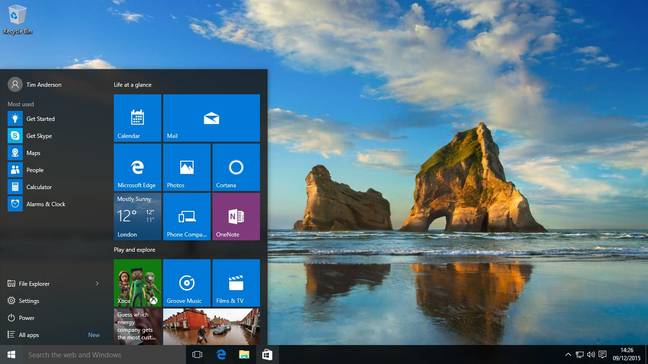This article is more than 1 year old
Microsoft in 2015: Mobile disasters, Windows 10 and heads in the clouds
Just as well Azure and Office 365 are growing
Windows lost momentum
Windows lost huge momentum as a result of the failure of Windows 8 and the shift in strategy back to a desktop-oriented operating system, rather than one optimized for touch and tablets. Further, although Windows 10 is better in some aspects than Windows 7, the user interface is less consistent and traces of Windows 8 oddness remain.
Early bugs and privacy concerns about data gathering also marred the launch. Microsoft now need to stick with its Windows strategy for a few years, refining the system and building the application ecosystem.

Windows 10: well received but no PC saviour yet
Fortunately for Microsoft, its cloud story looks much better. It is finding success with Office 365, a suite of hosted services including email, document storage, and collaboration tools. Alongside Office 365 there is Azure, a full range of cloud services that is a clear number two behind AWS.
In its latest results, Microsoft reported Azure revenue up 121 per cent year on year. In November, the company announced plans to build an Azure region (multiple data centres) in the UK.
Microsoft’s server products also continue to perform well. Whereas Windows on PCs has suffered from strategy lurches as well as strong competition both from Apple and from mobile operating systems, its server strategy has been sharply focused on virtualisation, modularity and automation.
Windows Server 2016 is not ready yet, but in 2015 we saw promising previews of the next generation of Hyper-V, its virtualisation platform. Another interesting preview is Nano Server, a stripped-down server which fits neatly with the trend towards microservices, distributed applications composed of many separate services, as well as cloud deployment where a lightweight operating system is an advantage.
The company has also figured out that if applications are hosted on Azure, or consume Microsoft services such as Azure Active Directory or Office 365, then it can profit whatever the operating system. In November it announced a partnership with Red Hat to support Red Hat Enterprise Linux on Azure.
Microsoft is also busy building a cross-platform server application platform with its open source project called .NET Core, a fork of its Windows-only .NET Framework. ASP.NET web applications can run on Windows, Linux or Mac.
In 2015, Microsoft lost the mobile wars, made gains in cloud, and moved its application platform towards open source and cross-platform development. Windows on PCs looks headed towards a long slow decline, despite the efforts made with Windows 10.®
